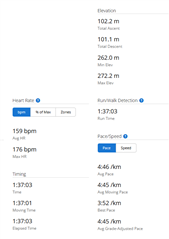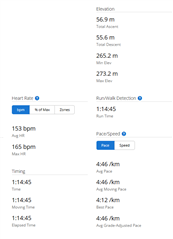Can someone explain my why Avg GAP for my runs is almost always higher or the same then avg pace when elevation difference is zero
or even when total ascent is higher then descent ?
Just random example from Garmin Connect:
Avg Pace: 4:20
Avg GAP: 4:24
Total Ascent: 6
Total Descent: 6
For the same interval on Strava Avg GAP is 4:16
My understanding is that when route is not flat avg GAP should be almost always lower then avg pace as running up and down is more difficult then on flat and
Strava seems to be correct but I'm not able to figure out what is Garmin logic here.




